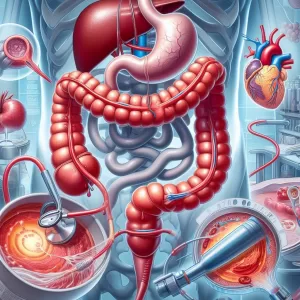What is Exploratory Laparotomy: Overview, Benefits, and Expected Results
Definition & Overview
An exploratory laparotomy is an open surgery performed to gain access to the internal organs and tissues for diagnostic purposes. It aims to look for signs of disease that affect the abdominal organs, which include the appendix, bladder, intestines, gallbladder, liver, pancreas, kidneys, ureters, spleen, stomach, uterus, fallopian tubes, and ovaries. It can also be used to take tissue samples for further diagnosis (biopsy) and as a therapeutic procedure.
Who Should Undergo and Expected Results
An exploratory laparotomy is recommended for patients who are suspected of the following conditions:
- Ectopic pregnancy
- Endometriosis
- Appendicitis
- Traumatic injury to internal organs
- Abdominal infection
- Intestinal perforation
- Cancer of the colon, liver, pancreas, and ovaries
- Gallstones
- Diverticulitis
- Pancreatitis
- Liver abscess
- Retroperitoneal abscess
- Abdominal abscess
- Pelvic abscess
- Adhesions, or scar tissue in the abdomen
- Peritonitis
Doctors may also prescribe an exploratory laparotomy for patients who complain of abdominal pain with no known origin and for those who sustain traumatic injuries or blunt trauma to the abdomen.
Exploratory laparotomy is sometimes performed as an emergency procedure because there is a high risk of internal bleeding and infection when abdominal organs are involved.
Its main purpose is to determine the origin of pain or other symptoms, the extent of the problem (or the stage of the disease), and to conduct any repairs necessary.
How is the Procedure Performed?
An exploratory laparotomy is performed under either general or spinal anaesthesia and takes around 1 to 4 hours, depending on the underlying medical problem.
During the procedure, the surgeon makes a cut across the abdomen to examine the organs. The incision may be transverse (horizontal), curved, T-shaped, median (vertical), or paramedian, depending on the specific needs and goals of the procedure. If there is a specific health concern, the surgeon also makes a cut near the organ involved. The incision penetrates through the subcutaneous fat, the muscles of the abdomen, and the peritoneum. In some cases, surgeons use electrocautery to cut through the subcutaneous tissues to minimise bleeding during the procedure. If necessary, a biopsy sample may also be taken.
If there is no known cause of the symptoms, the surgeon will explore the abdominal cavity to look for any signs of disease, infection, or trauma. Usual signs of a problem include the presence of other bodily fluids as well as an abnormal smell.
Recovery from the procedure can take up to four weeks but patients are usually able to eat and drink normally after two to three days.
After the procedure, the abdominal wall layers are stitched back in reverse order, and the incision is either sutured or stapled. Since the patient will not be able to eat or drink immediately after the procedure, an IV line is placed where fluids and medications are administered. A catheter is also placed to drain urine from the bladder.
Possible Risks and Complications
As a major open surgical procedure, an exploratory laparotomy carries some risks and potential complications. These include:
- Infection
- Bleeding or blood loss
- Blood clot
- Organ damage
- Hernia formation
- Breathing difficulties
- Adverse reaction to anaesthesia
The risk of complications is higher for patients who smoke, drink, or have chronic medical conditions, such as diabetes.
Also, since the procedure requires a large incision, patients can expect to have a large scar, prolonged recovery time, and several days of hospitalisation.
References:
Devour, D., Knauft R. “Exploratory laparotomy for abdominal pain of unknown etiology.” Arch Surg. 1968; 96(5):836-839. http://archsurg.jamanetwork.com/article.aspx?articleid=567059
Gupta A., Srivastava U., Dwivedi P., Shukla V. “Post-operative visual loss: An unusual complication after exploratory laparotomy.” Indian J Anaesth. 2013 Mar-Apr; 57(2): 206-207. http://www.ncbi.nlm.nih.gov/pmc/articles/PMC3696278/
/trp_language]
## What is Exploratory Laparotomy? **(Overview, Benefits, and Expected Results)**
An exploratory laparotomy is a surgical procedure involving an incision in the abdominal wall to examine and explore the abdominal cavity. It is primarily performed to diagnose and treat underlying abdominal conditions when other diagnostic methods fail to provide a clear diagnosis.
### Overview
During an exploratory laparotomy, the surgeon makes an incision in the abdomen to access the abdominal organs, including the stomach, liver, intestines, gallbladder, pancreas, and reproductive organs. The surgeon carefully examines the organs, tissues, and structures within the abdomen, searching for abnormalities, infections, or diseases.
### Benefits
Exploratory laparotomy offers several benefits:
- **Accurate Diagnosis:** Provides a definitive diagnosis by directly visualizing and examining the abdominal organs.
– **Treatment Options:** Allows for immediate surgical intervention if necessary, such as removing tumors, repairing damaged organs, or draining abscesses.
- **Biopsy:** Enables the surgeon to obtain tissue samples for biopsy, providing valuable information for cancer diagnosis and staging.
– **Exploration:** Facilitates a thorough examination of the abdominal cavity to identify any abnormalities or hidden conditions.
### Expected Results
The expected results of an exploratory laparotomy depend on the underlying condition and the specific treatment performed. Generally, patients can expect:
– **Diagnosis:** A definitive diagnosis of the abdominal condition.
– **Treatment:** Resolution or improvement of the underlying condition, depending on the surgical intervention.
– **Recovery:** The recovery period typically involves pain management, wound care, and gradual resumption of activities.
– **Complications:** As with any surgery, there is a risk of complications, such as infection, bleeding, or damage to abdominal organs.
### Conclusion
Exploratory laparotomy is a diagnostic and therapeutic procedure that allows surgeons to directly examine the abdominal cavity. It provides accurate diagnoses and enables immediate treatment, leading to improved outcomes for patients with suspected abdominal conditions. While there are potential risks and complications associated with the surgery, the benefits often outweigh the risks in cases where other diagnostic methods prove inconclusive.
One comment
Leave a Reply
Popular Articles








# Exploratory Laparotomy: An Overview of Its Benefits and Expected Results